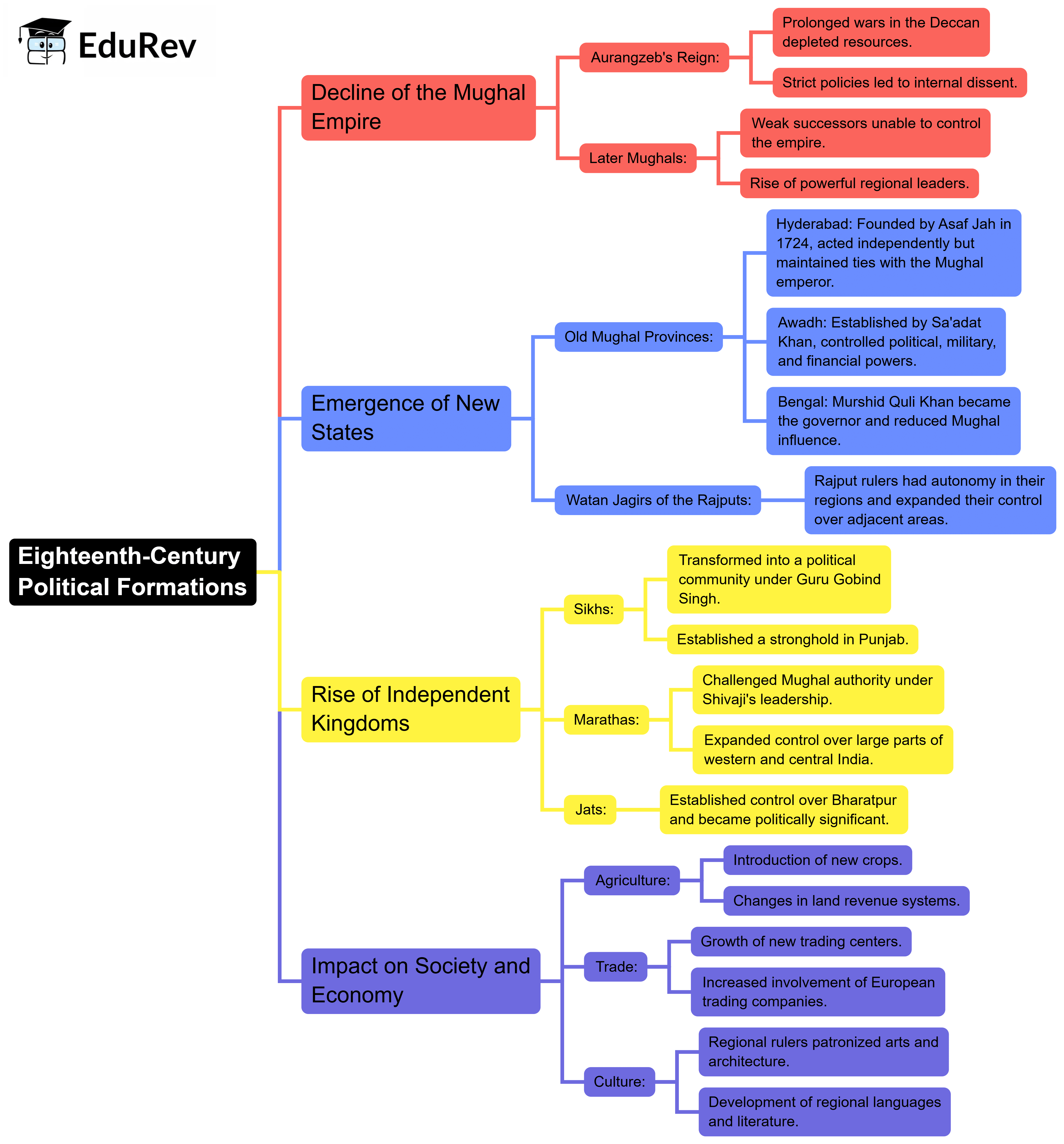UPSC Exam > UPSC Notes > Class 6 to 12 NCERT Mindmaps for UPSC Preparation > Mind Map: Eighteenth Century Political Formations
Mind Map: Eighteenth Century Political Formations | Class 6 to 12 NCERT Mindmaps for UPSC Preparation PDF Download

The document Mind Map: Eighteenth Century Political Formations | Class 6 to 12 NCERT Mindmaps for UPSC Preparation is a part of the UPSC Course Class 6 to 12 NCERT Mindmaps for UPSC Preparation.
All you need of UPSC at this link: UPSC
FAQs on Mind Map: Eighteenth Century Political Formations - Class 6 to 12 NCERT Mindmaps for UPSC Preparation
| 1. What were the major political formations in the eighteenth century? |  |
Ans. The major political formations in the eighteenth century included absolute monarchies, constitutional monarchies, republics, and emerging forms of democratic governance. Key examples include the Habsburg Empire, the Kingdom of France under Louis XIV, the British constitutional monarchy, and the early United States Republic.
| 2. How did the Enlightenment influence political thought in the eighteenth century? |  |
Ans. The Enlightenment introduced ideas of reason, individual rights, and social contracts, significantly impacting political thought. Philosophers like John Locke and Jean-Jacques Rousseau argued for government based on consent and the protection of natural rights, which inspired revolutionary movements and reforms throughout the century.
| 3. What role did revolutions play in shaping political formations during the eighteenth century? |  |
Ans. Revolutions, particularly the American Revolution (1775-1783) and the French Revolution (1789), played a crucial role in reshaping political formations. They challenged traditional monarchies, promoted ideas of liberty and equality, and led to the establishment of republics and democratic governments, influencing political developments worldwide.
| 4. How did colonialism impact political formations in the eighteenth century? |  |
Ans. Colonialism expanded the reach of European powers, leading to the establishment of empires that influenced political formations. The economic exploitation of colonies and the resulting wealth contributed to the power dynamics in Europe, while colonial administration created a complex interplay of governance that affected both the colonizers and the colonized.
| 5. What were the key characteristics of absolute monarchies in the eighteenth century? |  |
Ans. Key characteristics of absolute monarchies in the eighteenth century included centralized control by the monarch, limited political power for nobility and commoners, and the idea of divine right. Monarchs like Louis XIV of France exemplified these traits, consolidating power and diminishing the influence of other governing bodies.
Related Searches





















